8 min read
How BlaBlaCar Leverages Braze Canvas Flow to Create a Powerful Abandoned Cart Campaign That Increases Bookings
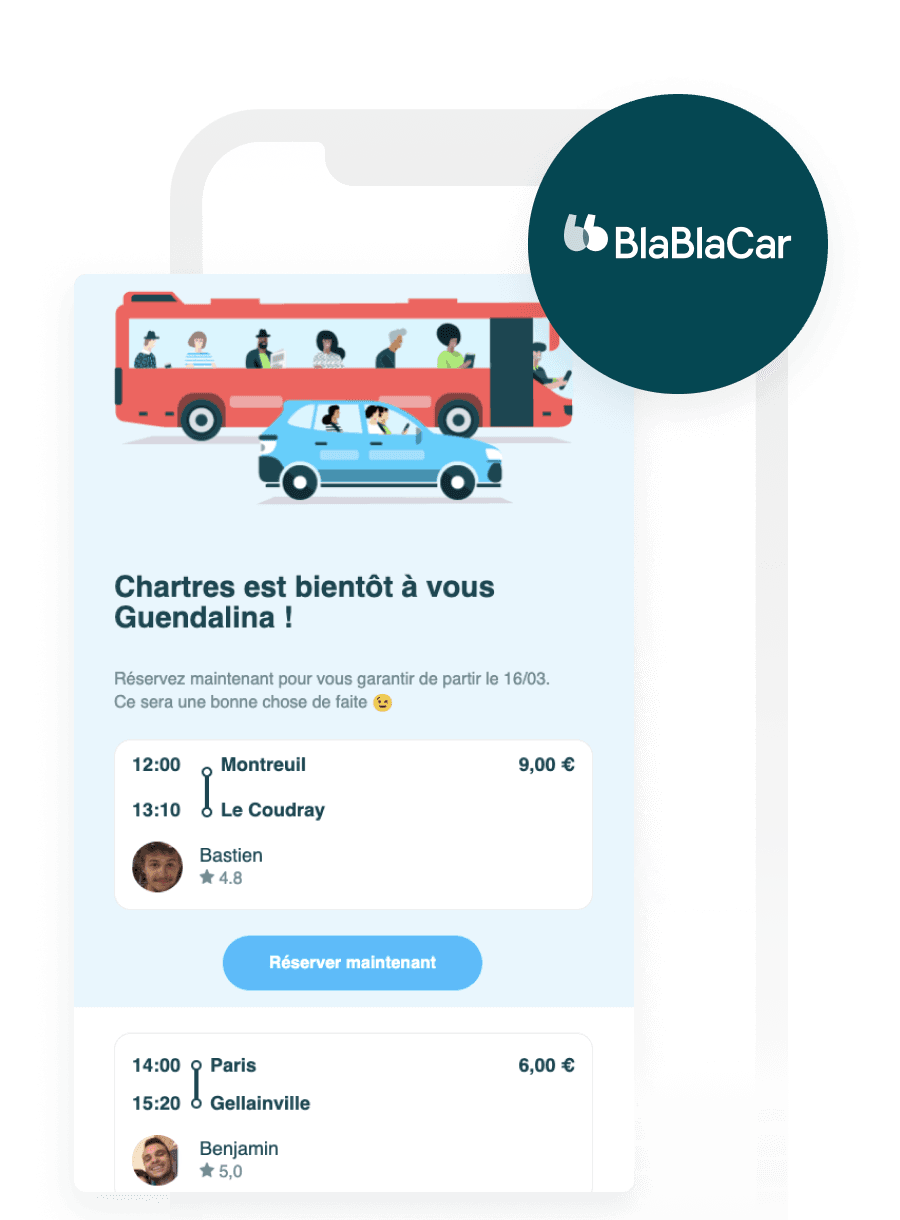
Passengers come to BlaBlaCar to plan their next trip, but the company noticed there were places in the customer journey where some users were dropping off. The team wanted to address the leaky funnel with a more cohesive user experience that increased bookings.
To create more complex use cases quickly, BlaBlaCar leveraged Canvas Flow to automate cross-channel journeys capable of sending messages at the right time and on the right channels. Embracing experimentation, BlaBlaCar set out to convert high-intent users looking to perform an action by leveraging email, push, Content Cards, in-app messages, and webhooks.
The team proved that this program could significantly increase bookings among their target audience. By integrating related content, they increased personalization and their use of Canvas Flow’s experiment path component helped prove that personalized emails can drive more engagement and conversions, compared to non-personalized emails.
INDUSTRY
PRODUCTS USED
BY THE METRICS
30%
Increase in bookings
48%
Uplift in click rate
BlaBlaCar is leading the way in community-based travel, with a network that enables over 100 million members to rideshare across 22 global markets. Thanks to the company’s future-forward outlook, the technology they leverage is as practical as it is visionary, connecting members looking to sync up a carpool or travel by bus. Instead of highways clogged with single-passenger vehicles, BlaBlaCar’s environmentally friendly approach saves 1.6 million tons of CO2 annually and drives 120 million human connections annually, proving that travel near and far can become a more affordable, convenient, and convivial experience for passengers and drivers everywhere.
When many marketing teams are looking to make the most of their investments and do more with less, Braze Canvas Flow has enabled BlaBlaCar to reach more of their customers at scale and increase team productivity. This feature can help drive financial KPIs, and its advanced automation can help teams cut back on back and forth with engineering and data teams, leading to more iterative and impactful campaigns overall. One of the many ways BlaBlaCar is leading the charge is by innovating both on the road and in its customer engagement strategy.
Taking a Visionary Approach to Maximize Revenue With Customer Engagement
For BlaBlaCar users, trust is everything. Customers need to know BlaBlaCar is there for them when they travel, and one way to keep the brand top-of-mind for its users is via customer engagement. By actively accompanying users at every step of the lifecycle, BlaBlaCar’s marketing team works to build lasting customer relationships that lead to increased brand loyalty and repeat business.
Finding a partner for their customer engagement led them to Braze in 2017. Before adopting Braze, BlaBlaCar used an internal tool focused on email that couldn’t send push and wasn’t able to effectively support cross-channel campaigns. That tool’s manual features made it challenging to manage customer journeys across email and push, and hurt the company’s ability to target specific segments. As the company adopted an app-first strategy, these limitations necessitated the migration to Braze. Built with first-party streaming data, Braze was architected to help the brand make the most of every lifecycle stage, from activation to onboarding and retention.
The ability to target specific use cases and audience segments came in especially handy when the team set out to address their abandoned cart needs. BlaBlaCar decided to leverage Canvas Flow, our customer journey orchestration tool, to build out a holistic, impactful abandoned cart program that was capable of closing this key gap.
Building a Successful Abandoned Cart Strategy, Step by Step
With Braze, BlaBlaCar could successfully create an abandoned cart program exactly as they imagined. That meant building in rich personalization, A/B testing, custom event properties, and razor-precision automation to optimize send time and delivery.
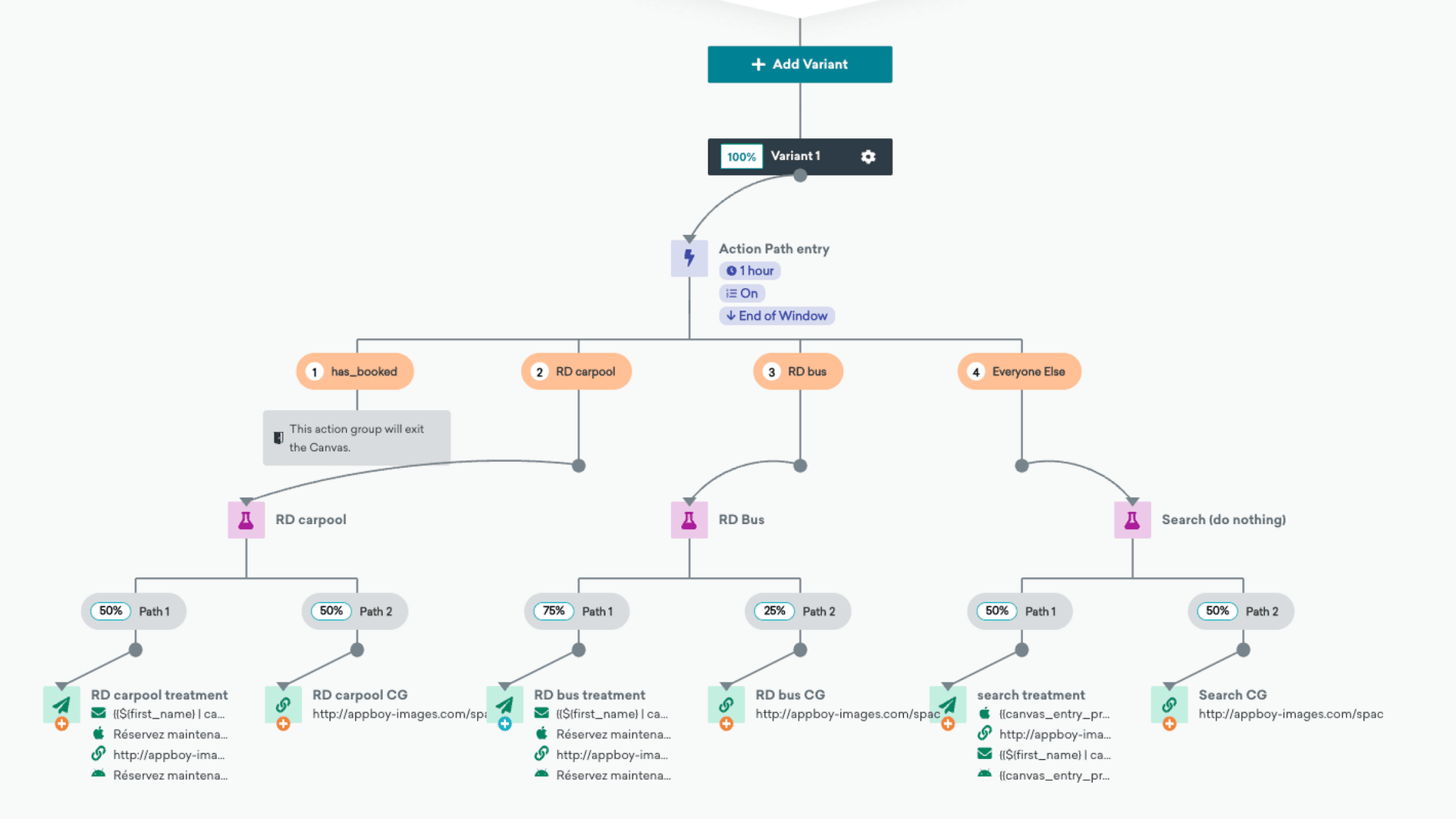
Their Strategy:
1. When BlaBlaCar noticed a cohort of users were searching for a solution to their travel needs but then leaving before they completed the booking process, the company realized it was time to close the gap. Just like retailers who drive results by prioritizing abandoned carts, BlaBlaCar identified this audience set as a high priority to reach and nudge them to finalize their booking.
2. The team aligned on a channel mix that they planned to use to encourage users to return to their booking. This mix included email, push notifications, and some thoughtfully-deployed webhooks.
3. With Braze as their partner, BlaBlaCar’s product and marketing teams could leverage Canvas Flow, an intuitive customer journey builder that enables easy orchestration and execution. Its drag-and-drop interface and seamless integrations make it easy to compose and customize messages according to each stage of the customer lifecycle. Audience segmentation, reporting, and analytics built into Canvas Flow enable teams to track performance and prove the impact of their efforts in real time.
4. Canvas Flow, which was released in 2022, enabled BlaBlaCar to create Canvases they couldn’t have created before. When they initially build out their abandoned cart journey, the team realized that users weren't progressing the way they'd expected—but the introduction of action paths, part of Canvas Flow, allowed them to design a flow that matched their goals.
5. Within Braze Canvas Flow, the team was able to adapt each message to an individual user based on where the members abandoned their booking. Let’s say someone was in the app considering a trip. In Canvas Flow, custom event properties make it possible to retrieve information from the flow regarding the steps carried out by the members and then use that data to personalize copy in an email or push notification. Some of the event properties they identified for this program included:
- Users who booked their trip
- Users searching for a carpool / visiting a carpooling ride
- Users searching for a bus / visiting a bus ride
- All remaining users who did not all under the parameters above
6. Crafting the right message is only half the battle—to be as effective as possible, it’s important to ensure that the outreach has up-to-the-moment relevance for the user. Using action paths, BlaBlaCar was able to hold users in a segment for a specific time (i.e. 1 hour) until they performed a given action, such as completing a booking.
7. If a user didn’t complete their booking within that time, they were routed down the path to 3 remaining audience segments and received a different flow of personalized messages. Action paths can be as granular as your marketing requires: This particular action path ensured that when BlaBlaCar sent a message to a customer encouraging them to finalize their booking, it didn’t say that individual was looking at a booking "minutes ago" when they were actually browsing hours earlier.
8. For users who entered the carpool or bus booking flow, they received an email and a push urging them to book their ride that pulled in the location of where they were searching, providing a more compelling, customized experience.
9. Using Canvas Flow, it’s possible to create more complex Canvases in less time and to iterate more easily and frequently. Now, when BlaBlaCar creates a Canvas, they know they can control specific components with more granularity instead of relying on trial and error to get it right.
10. How they iterate: The possibility of adding an experiment path at all levels allows BlaBlaCar to run additional tests if needed, then quickly choose the winning version and delete the test step afterwards.
11. How they save time: Action paths and audience evaluation allows the team to be more confident, and spend less time on manual testing and QAing. They also don’t have to waste time on finding workarounds or checking random users to see if they received the right step at the right moment.
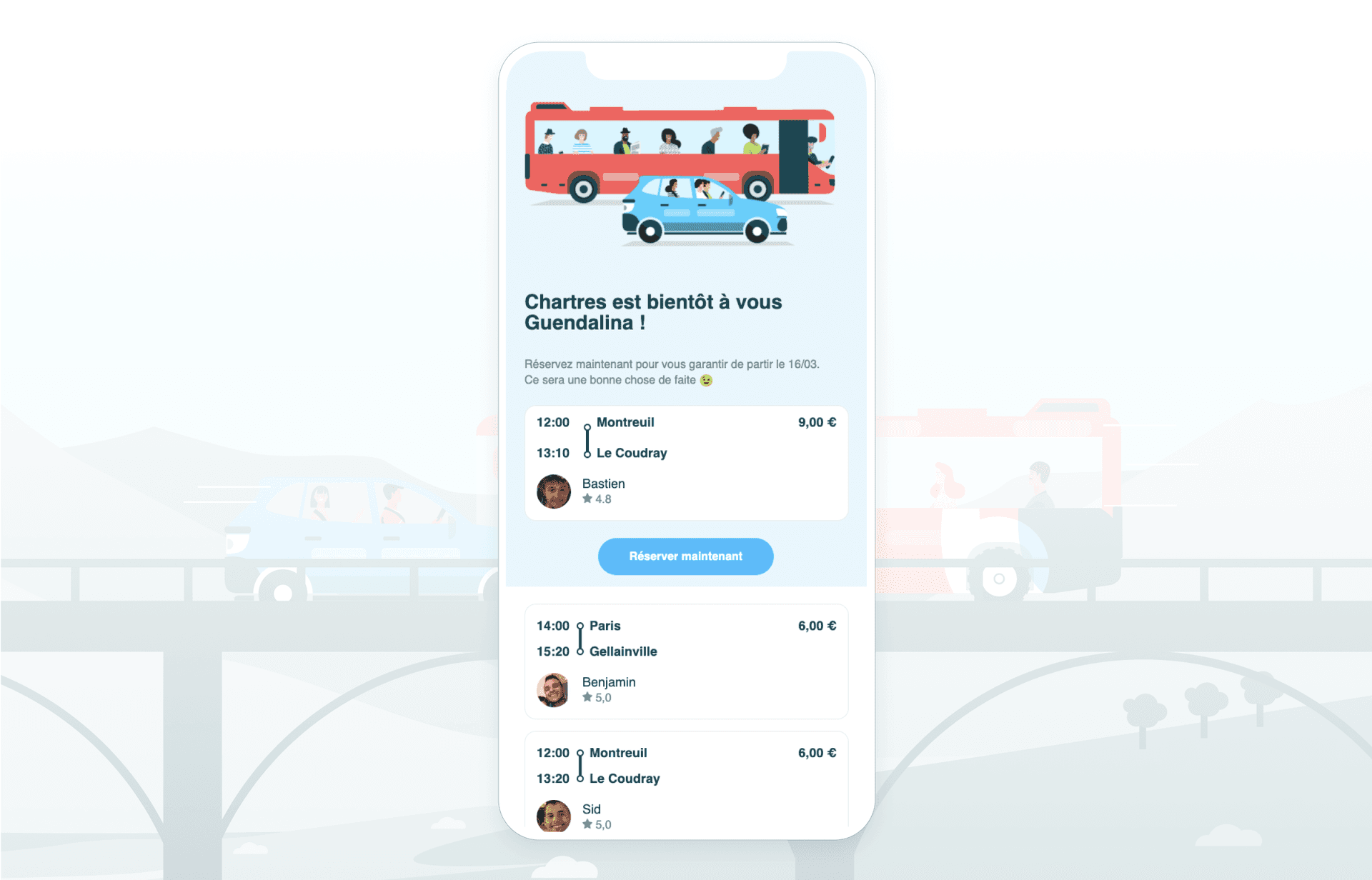
12. To build in experimentation to measure the impact of the program on bookings, BlaBlaCar used Canvas Flow’s experiment paths. This enables the brand to split its general audience into target and control groups to run reliable A/B tests quickly. (In this instance, the target group included those who received abandoned cart nudges, while the control included those who did not.)
13. Lastly, the team used Braze to easily sync important programs associated with their owned channels directly to their Facebook and Google via Braze Audience Sync. A key benefit to BlaBlaCar was the ability to use first-party data from their owned efforts to optimize their paid targeting and campaigns. With the Google and Facebook audience component, BlaBlaCar can first maximize conversions with CRM, and then precisely target those who did not convert with paid channels. They also saved time by avoiding the need for the manual export and import of audiences.
Results: Higher Conversions and Click Rates
BlaBlaCar’s abandoned cart program was a significant success, demonstrating the impact of engagement on conversions. When the team compared the target audience against the control group, they saw a significant uplift in booking conversions as a result. They also saw that integrating the Braze platform’s Connected Content dynamic personalization feature to populate their messages with more personalization gave every message a more personal touch; that, in turn, higher engagement, with users who received this customized outreach being more likely to convert than those who got more basic messaging. BlaBlaCar saw up to a 48% uplift in their message click rate and up to a 30% uplift in conversions (bookings) in connection with the enriched version of the emails.
Key Takeaways
- Customer engagement can be equal parts efficient and cost-effective. Talk of belt-tightening is everywhere, but don’t be alarmed. Multi-step, cross-channel campaigns can be achieved and executed at scale without huge data teams or eye-bulging investments. Investing in tools to help you build and automate the campaigns you need to boost engagement and retention can lead to higher customer lifetime value (LTV) without breaking the bank.
- Custom events can be industry-agnostic. See something in your data that feels comparable to an industry that’s different than your own? Double-click on it. Low conversion anywhere is a learning opportunity, so don’t be shy about drawing parallels to guide your strategy. For BlaBlaCar, that unfinished bookings could be treated like an abandoned cart is a key discovery (and thus a timely push notification nudging users to check out could drive more business), one with the potential to drive significantly more business.
- Want to convert someone? Get personal. Personalization is no longer a nice-to-have but a necessity. Be sure your marketing efforts prioritize the data and customer engagement strategies needed to demonstrate to your customers that your brand is going the extra mile to put their experience first.
Check out more Case Studies
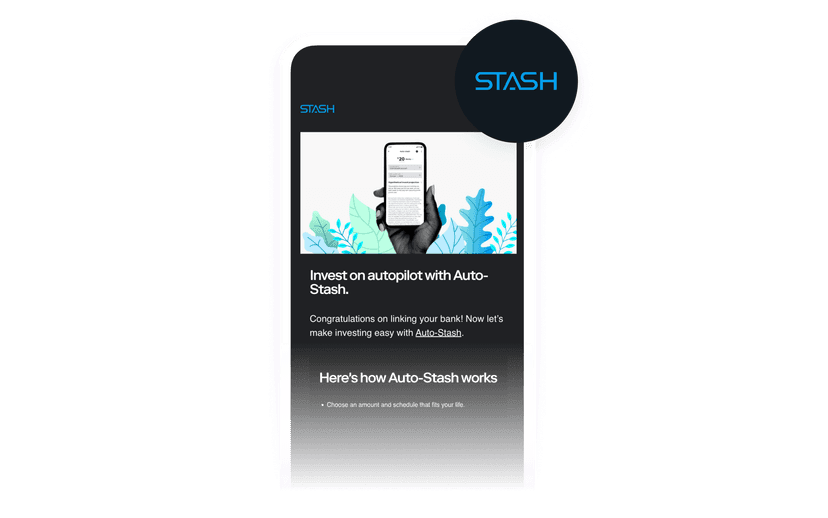 Case Study5 min read
Case Study5 min readStash drives long-term investing habits with sophisticated, personalized user onboarding
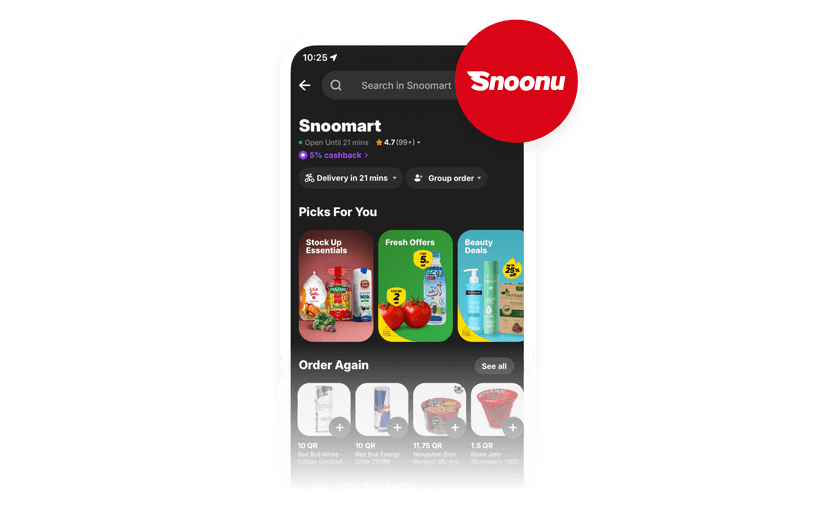 Case Study3 min read
Case Study3 min readSnoonu drives customer loyalty and repeat orders through a gamified shopping experience
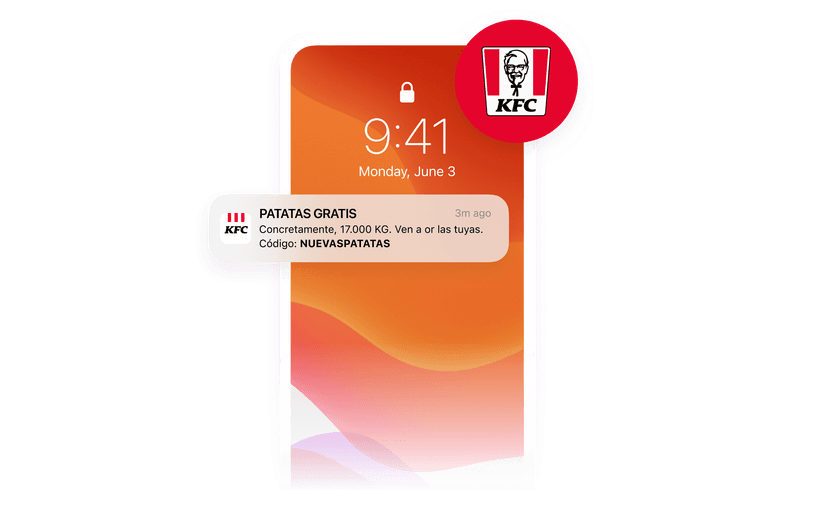 Case Study4 min read
Case Study4 min readKFC Spain's bold customer engagement strategy turned critics into fans